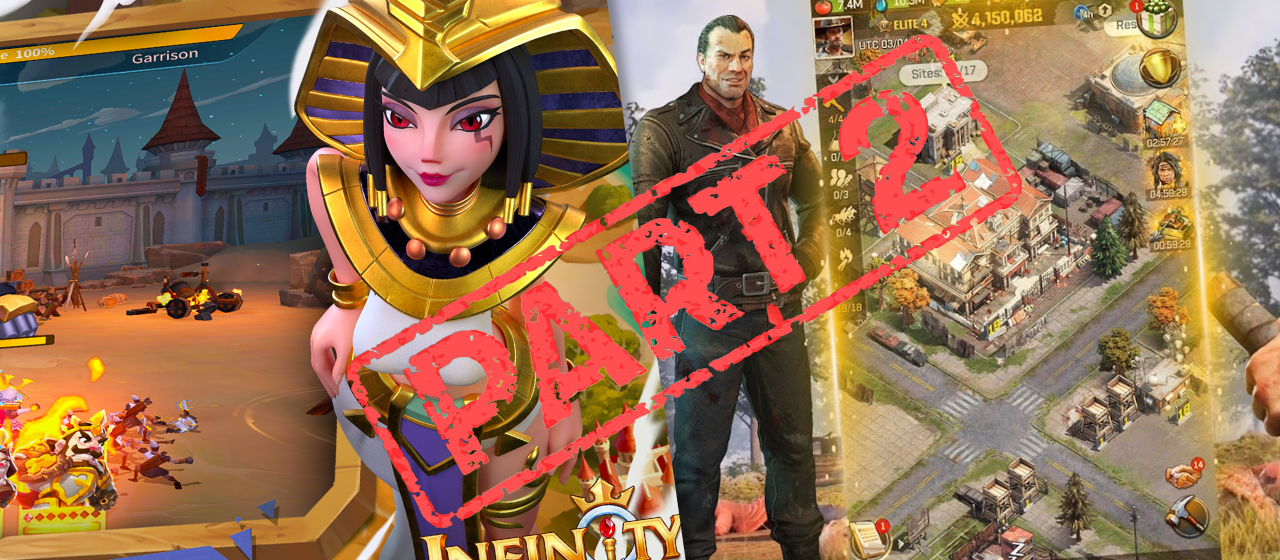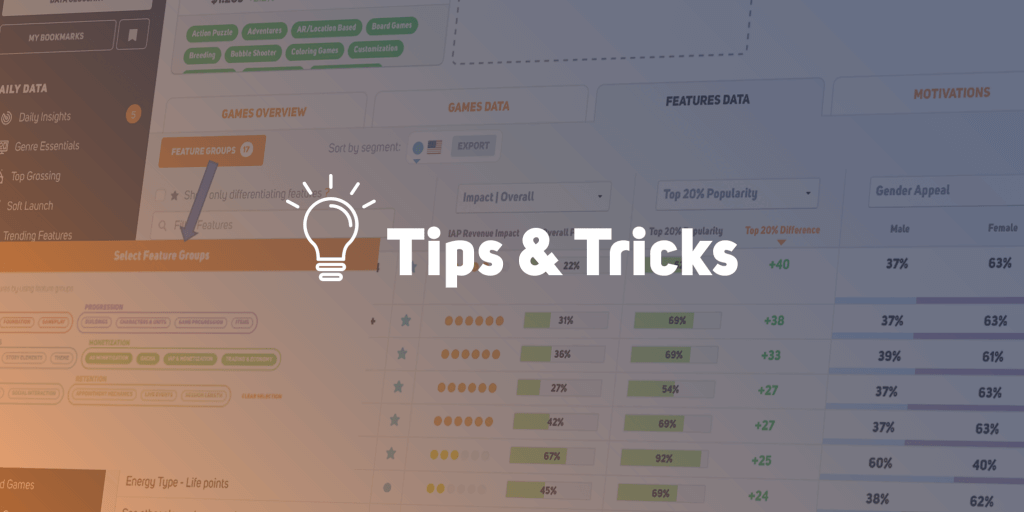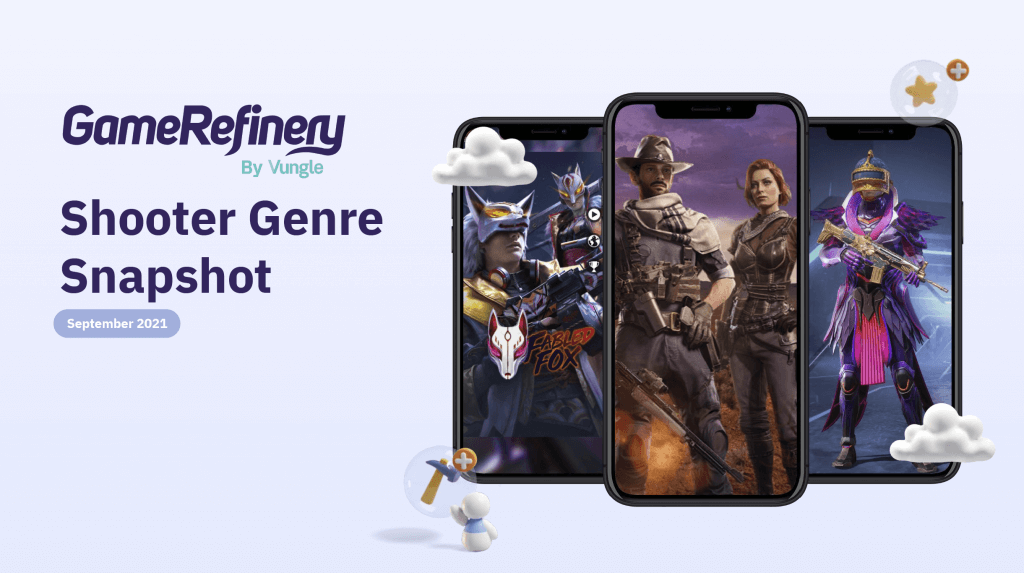In the first part of our analysis on 4X Strategy/SLG games’ success drivers, we covered Foundation and Progression. In this second part, we will dive into the Social, Retention, Audiovisual, and Monetization features of these 4X Strategy games.
Social aspect
In the first part, we went over the motivational drivers of 4X Strategy players. In general, one of the biggest drivers for these players is the game’s social aspect, which is, of course, reflected in the games’ features.
Social engagement in the 4X Strategy genre is very crucial and often defines your success in the game. Let’s take a look at the guild feature, which you’re likely to see in pretty much every 4X game out there. Guild tasks often include helping your guildmates building/troop/research timers while they help you with those same activities. So naturally, there’s the motivational driver to do those tasks to return the favor to your guildmates, but you most likely also receive guild currency by doing these guild tasks, which can be used in a guild shop, where you can buy almost anything – resources, shields, boosts, speed-ups, experience cards, and much more! Being able to buy 12-hour PvP shields to protect your town with guild currency shows how important it is to be in a guild, as you usually only can purchase these shields using premium currency. Hell, even being in a guild can prevent you from getting attacked, as your guild most likely would happily retaliate against the attacker!
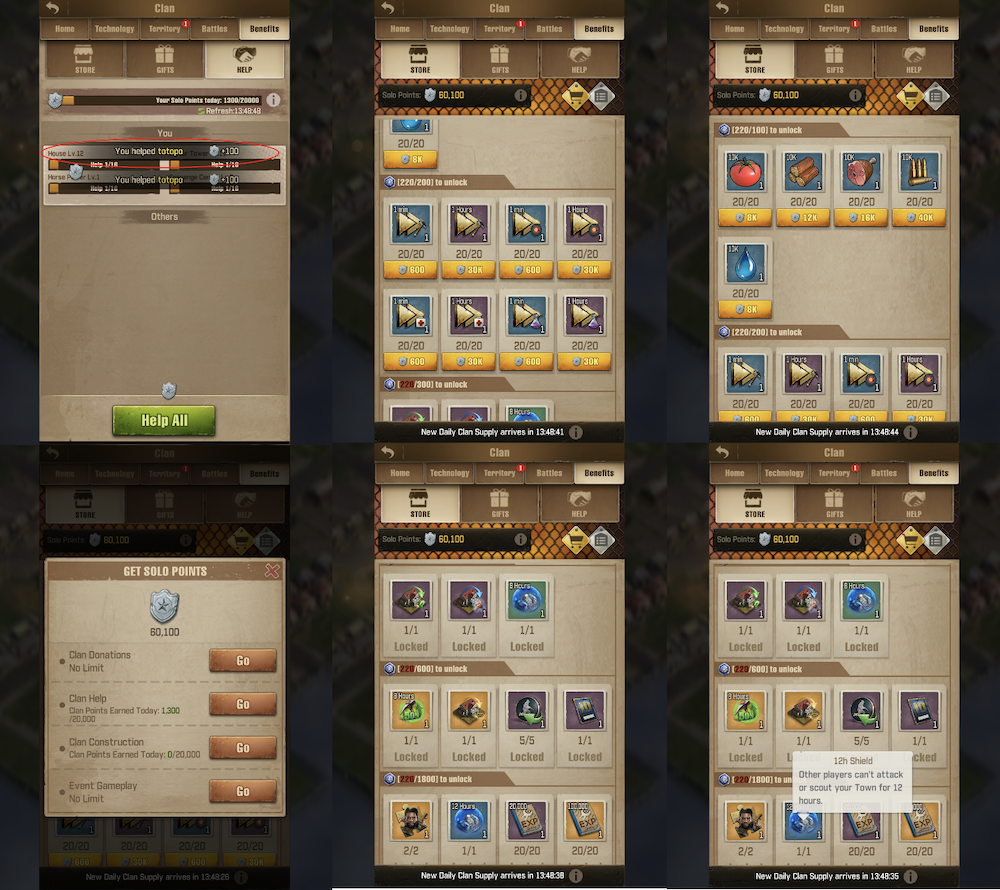
Guild gifts have become an essential part of 4X Strategy games, which shows in the top 200 list, with over 92 % of the 4X games having this feature. Guild gifts are mainly acquired through in-app purchases, e.g., “guild bundle,” but in some cases can also be earned from killing PvE monsters in the wide-open world map. Guild gift feature is almost always included in the newer 4X Strategy games, and now older 4X games have also hopped in on this trend. For example, War and Order (released in 2016) introduced guild gifts to the game earlier this year.
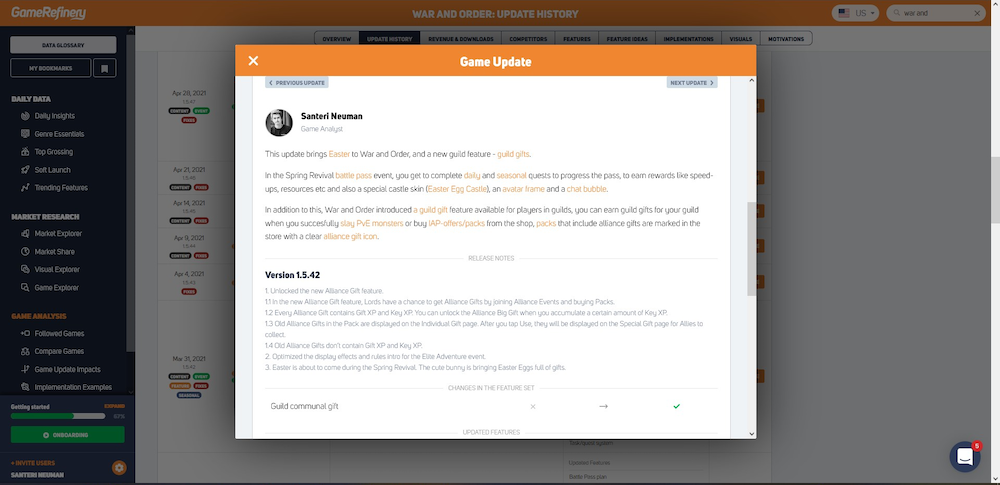
For example, Rise of Kingdoms utilizes Guild Wars in what players like to call “KvK,” where several Kingdoms enter a “new map” to co-operate and fight versus entering other Kingdoms to earn great rewards. This is a fairly long event, and you can teleport to this map. The main goal is, of course, to work your way through to the center of the map, and you need to occupy gates to enter these new zones. Needless to say, by taking a look at the map, that once moving towards the center, you will face other kingdoms, and battles will happen. A similar thing is actually in another of Lilith’s games, Warpath, where the focus is on taking control of cities. These are fun events for players who enjoy the thrill of the fight and the excitement of fighting battles together with their guild.
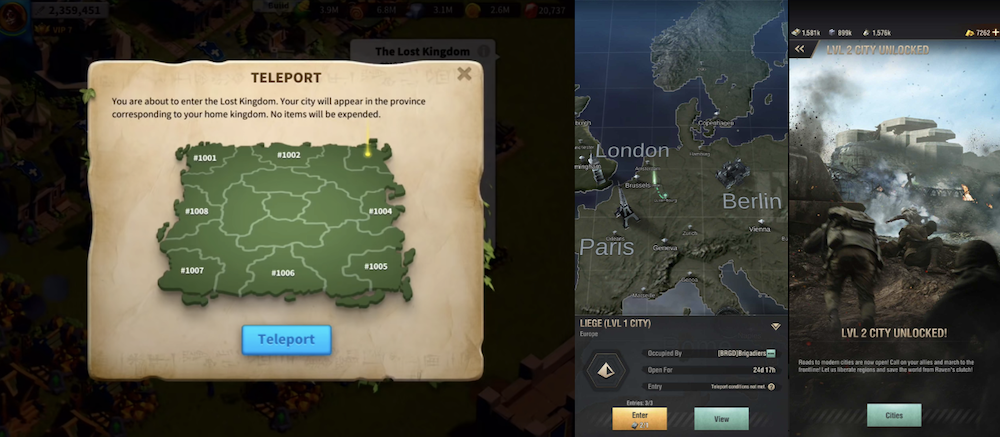
Retention
Monetization is, of course, linked to retention, and without long-term retention, there would be no way to have such a player base that continues playing and spending. This is where the live-ops comes in, and 4X Strategy/SLG games are very strong in bringing interesting event stuff into the game.
Quite recently, Rise of Kingdoms brought a 5vs5 sync PvP mode, where the goal is to capture flags and hold them. It’s a recurring event that offers you rewards for 1st, 3rd, and 6th victory in this game mode.
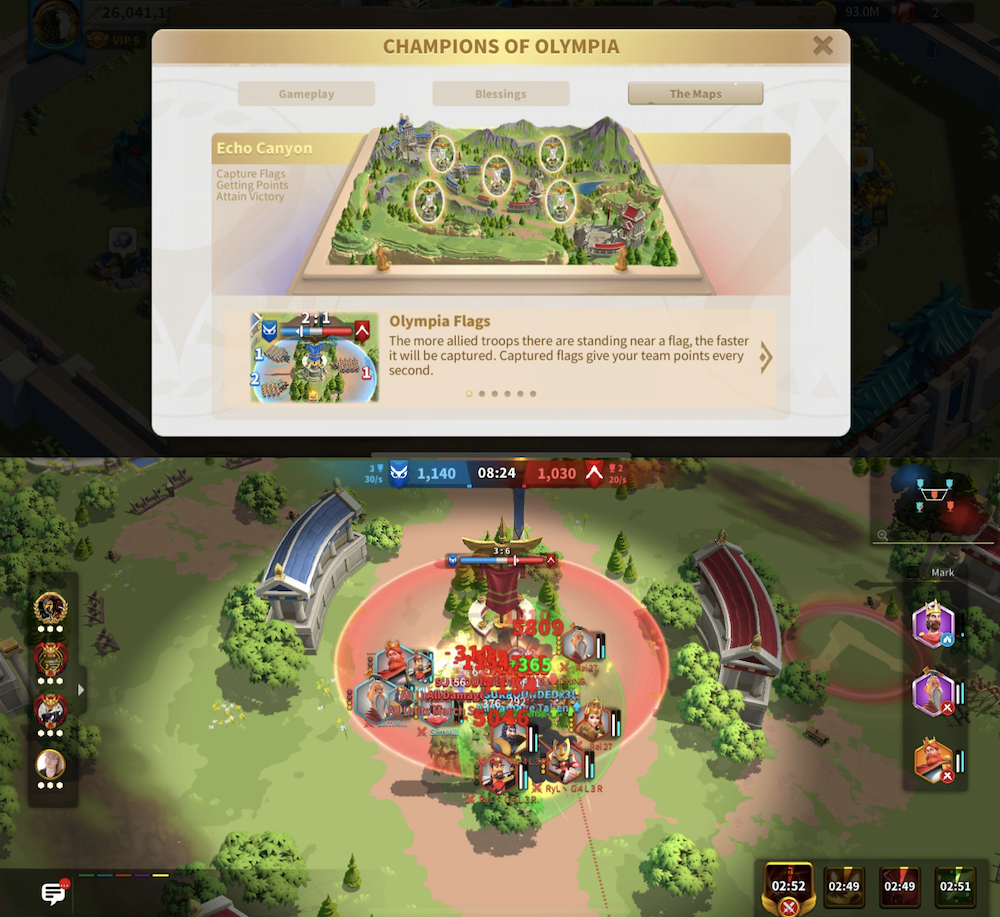
All the games in the US in the top 200 sustained grossing’s 4X Strategy segment are utilizing recurring live events, and for a good reason. They offer players something to do to feel that they are progressing in the game, which is crucial, especially for the players who have been playing for a longer time.
Now, let’s take Kiss of War as an example. It offers its players a recurring event, “Frontline of Hell,” where players get to defend their base from the German Army using FPS mechanics. You get rewards depending on how well you do and can then exchange tickets you’ve earned in the exchange shop to get boosts to help out in your 4X progression (speed-ups, resources, gacha tickets, etc.).

In general, there are usually several different events, recurring or non-recurring, running in 4X Strategy games to let the players have things to do and pique their interest.
Audiovisuals
When we look at the audiovisuals in the US top 200 grossing 4X Strategy games, we can see that when it comes to Artistic Style, Realistic and variations of it are utilized a lot among this segment. But how has this changed over the years? What’s the difference between the newer and older games?
There haven’t been many new games to enter the market with grim 2D graphics. Instead, there are more “colorful” art styles resembling Supercell’s games. For example, Infinity Kingdom has very beautiful graphics and an emphasis on character design.
In the newer 4X Strategy games, you can notice a lot of investment in user interfaces, visuals, overall details, and graphics compared to some of the older ones. One of the reasons this is happening is to make the game more approachable to newer players as 4X games are hardcore games, so having a clear user interface and good visuals makes it much more approachable and easier for the player to understand the game.
So, mainly newer games put more emphasis on the visuals to attract players who are not the typical players of the 4X genre type.
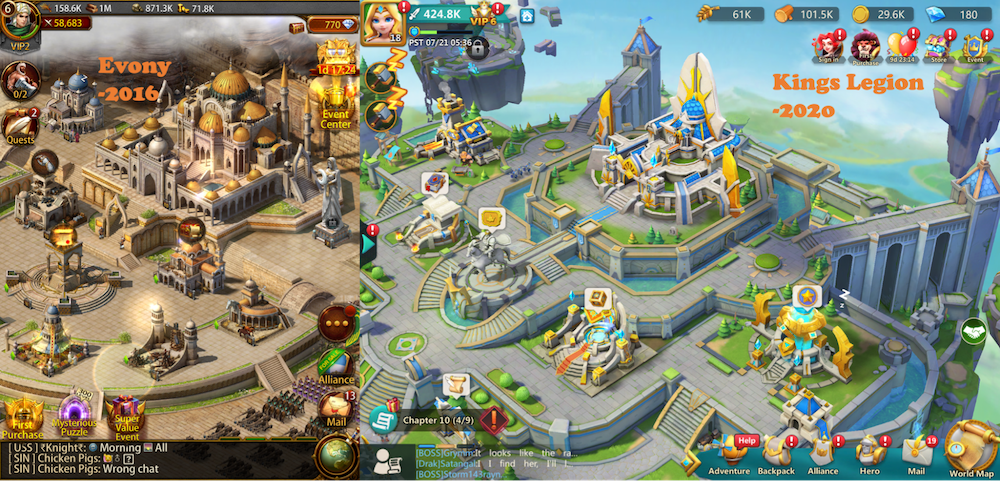

Monetization
4X Strategy/SLG games are strong in building long-term monetization strategies, and there are many features to help with it. So let’s dive into these features. I know that Altti has spent nearly 1000€ on Rise of Kingdoms, so let’s find out how these games succeed so well in monetization. 😀
Limited time IAP offers and daily offers. Most of the limited-time IAP offers in the newer 4X games have a heavy RPG emphasis as they often include new powerful heroes, hero shards, hero items, and experience cards. Daily offers are a big part of the monetization in 4X Strategy games. They are often limited to buy one per day packs, and some games even offer weekly/monthly boxes that you can only buy for a limited amount. These offers often give a great value to incentivize the player to purchase these offers.
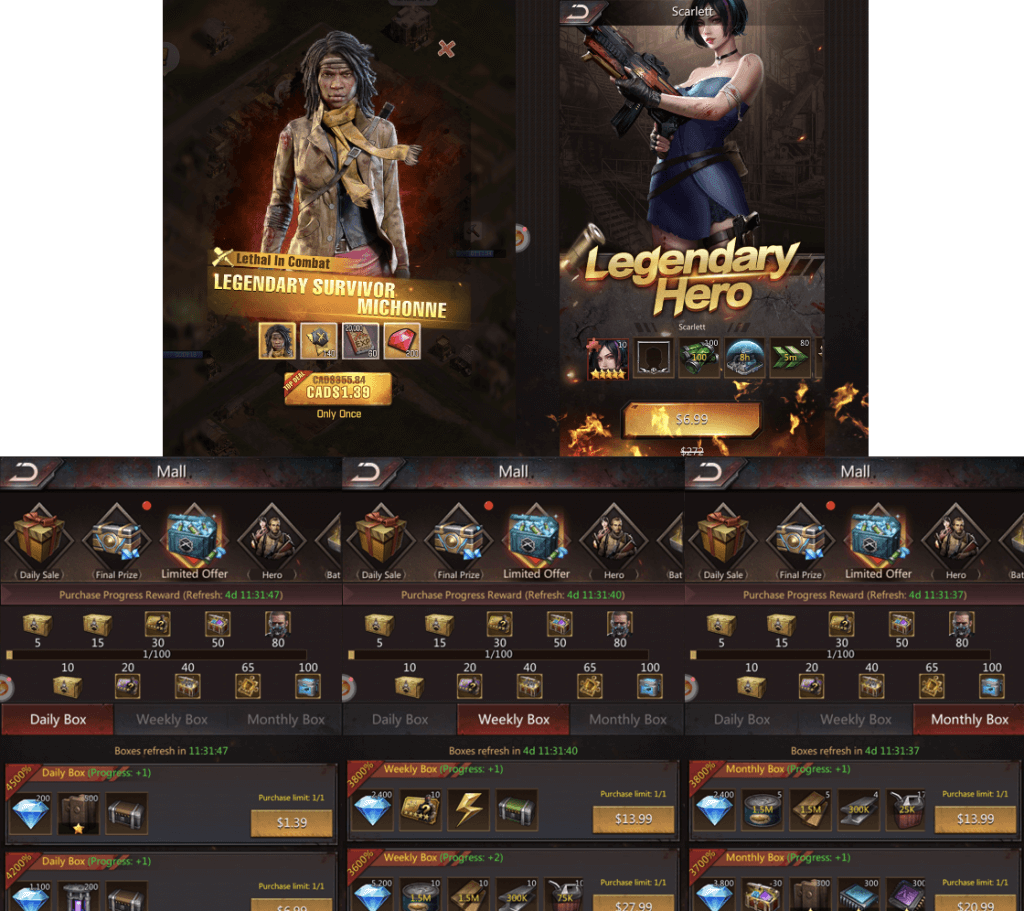
One thing that Rise of Kingdoms is doing pretty well is utilizing limited-time gachas as there are many legendary characters, but some are better than others, and you can’t get them via normal gachas. Hence it encourages you to utilize this opportunity to get the sculptures. There also can be a “Recharge Rewards” event happening simultaneously, where you can earn good rewards by stocking the premium currency via IAPs. This is important as these usually contain universal legendary commander sculptures that you can use to upgrade any legendary characters’ skills (very hard to acquire in general). When these two are running together, you can imagine that it does benefit you to buy premium currency to “Recharge Rewards,” and at the same time, you can use them to roll the limited-time gacha. To buy that required premium currency via IAPs costs around 14€. It is good to note that this happens within five days. Each day brings rewards, but you have to hit the required amount daily, and it doesn’t benefit to go over.
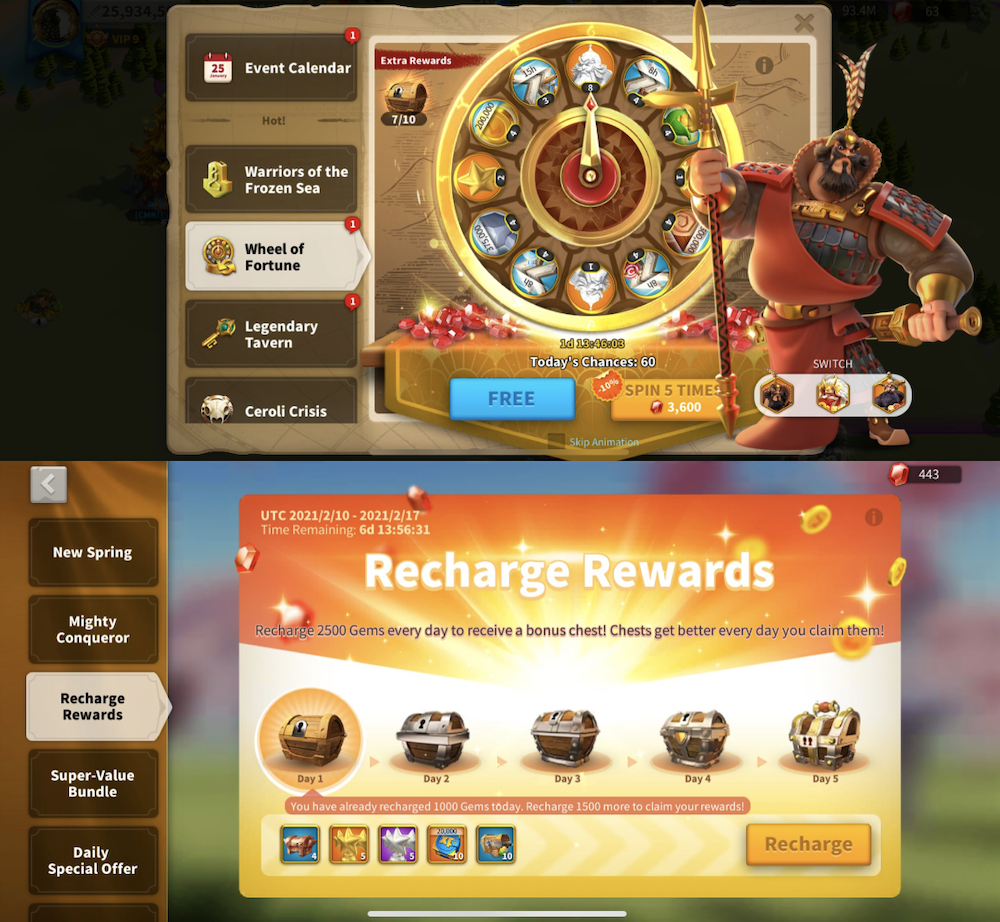
We often hear a lot about Battle Passes, and this is also the case with 4X Strategy games. Many Battle Passes have been introduced to games to offer players nice rewards from their activity in the game. But in the larger picture, when it comes to 4X games’ monetization, they are not necessarily the biggest thing for the game when considering all the IAPs that the player can spend their money on. Despite this, Battle Passes are a really nice thing, increasing the LTV of the players and what we call “a must-have” feature in the 4X segment. 🙂
To see what kind of different Battle Pass implementations can be found in 4X games, let’s look at Rise of Kingdom’s way of implementing a Battle Pass plan, for example. It has a particularly unique “mini Battle Pass plan,” which is utilized from time to time. You can read more about it from this post. In essence, the mini Battle Pass requires a large amount of premium currency but lasts only seven days. You usually have the option to go for either 5€ or 21€ package in the Battle Pass plan, but in the mini Battle Pass case, you have to go for that premium currency which is around 20-30€ (depending a bit on the IAPs you go for).
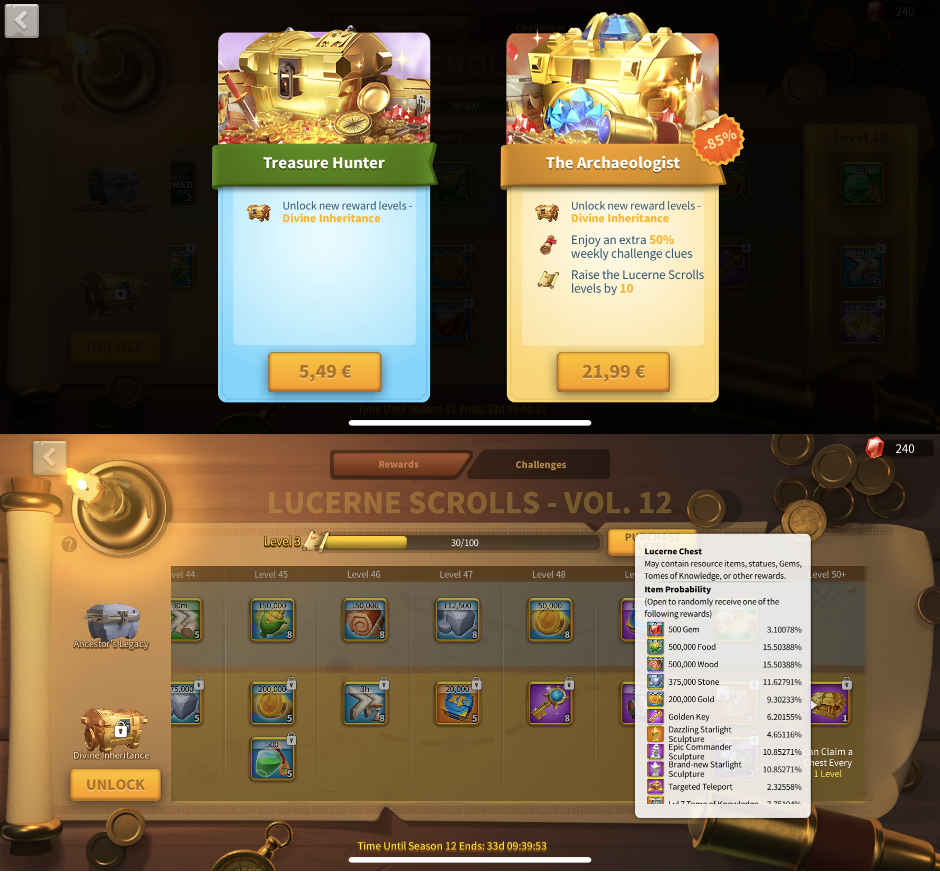
VIP System; VIP systems are a crucial part of 4X games. They often include a VIP shop, where you can get substantial limited-time deals like new characters, resources, speed ups, experience cards, and pretty much anything there is in a 4X game for premium currency. These offers usually change daily, and in some cases reaching certain VIP levels unlock offers you can purchase with real money. Many games also offer VIP chests that help you upgrade/acquire a good character, and you can buy this with every level on the VIP system. This is how it looks like in The Walking Dead: Survivors.
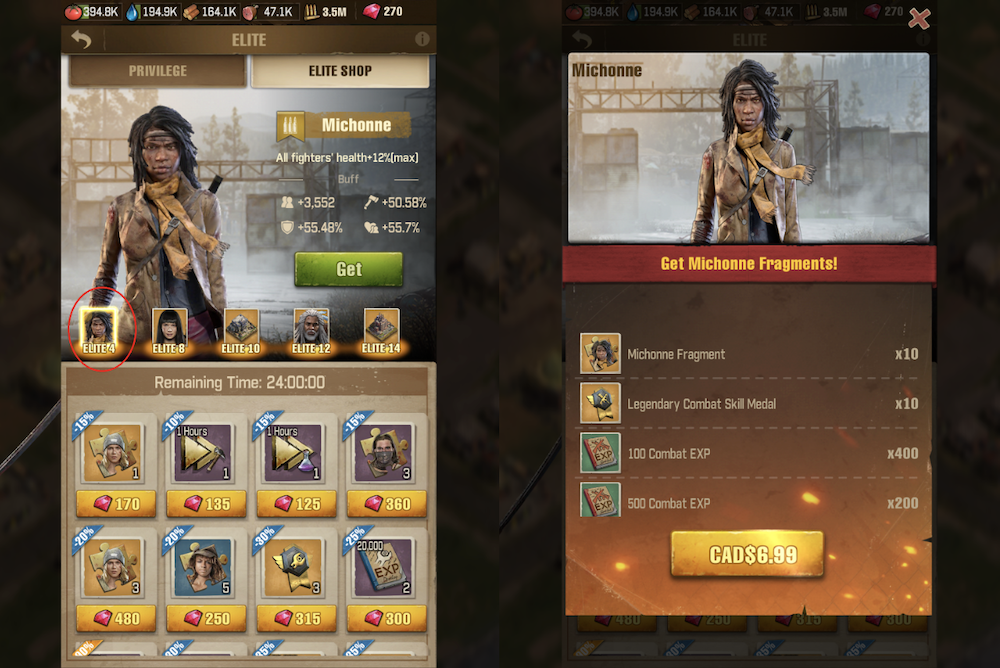
Conclusion
Based on the things that we’ve covered in these two parts, we can conclude that these five aspects can shortly summarize the success of 4X games:
- Long-term engagement: Constantly upgrading, researching, etc., makes you stronger and makes you want to keep progressing further as you can feel right away that your power is growing after an upgrade. This also is a big factor why you’d be willing to spend money on the game as well.
- Different game modes: PvE campaigns/PvP modes are a big part of 4X Strategy games, making the gameplay diverse and intriguing. In every successful 4X game, various game modes are available for players, as shown earlier (5v5 in Rise of Kingdoms, Frontline of Hell Kiss of War). The reason why there are so many of these modes is to keep the gameplay as diverse as possible and to offer players additional activities in addition to the traditional 4X gameplay.
- Social: Player interaction is an important part of the game, for example, by completing different tasks together through guilds. You can really build relationships with the people in the game, and it’s not uncommon to have a Whatsapp group with your guildmates.
- Recurring/non-recurring events: Constant recurring and non-recurring events offer players various activities to complete, and this way, you never run out of things to do. Often, completing these activities is incentivized by special rewards like decorative prizes or actual “tools” to upgrade your power.
- Monetization: Limited-time offers/gachas portray the heavy hybridization seen in the newer 4X Strategy games as most of the offers include new heroes and tools to make them stronger. Battle passes/Subscriptions are a nice thing in 4X games, but there are still various other more important IAPs available. Event monetization plays an important role in 4X monetization as there are often ongoing “recharge rewards” types of events that offer great value for players and encourage purchases.
If you enjoyed reading this post, here are a few more you should definitely check out:


